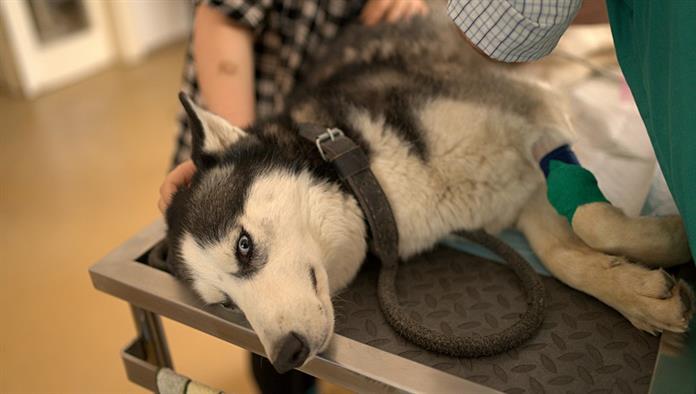
(Picture Credit: Kateryna Kukota/Getty Images)
Hemangiopericytoma in dogs is a medical condition where a malignant tumor forms on cells that surround some of the dog’s blood vessels. The cancer doesn’t usually spread throughout the rest of the body, but it does carry on growing at the tumor’s original location.
As the tumor grows, it can negatively affect nearby organs, including the lungs and heart. If left untreated, it can become fatal; although if diagnosed early enough, the condition is highly treatable. This cancer generally seems to affect larger breeds the most.
If you see signs that your dog might be developing a tumor, then you must consult your veterinarian for a proper diagnosis and course of treatment. Here’s what you should know about the symptoms, causes, and treatments of hemangiopericytoma in dogs.
Symptoms Of Hemangiopericytoma In Dogs
Hemangiopericytoma in dogs can produce a couple of main symptoms. The most common symptoms include:
- Appearance of a mass on a limb or the trunk
- Nodules or bumps that might look like ulcers
Causes Of Hemangiopericytoma In Dogs

(Picture Credit: Sebastian Condrea/Getty Images)
Hemangiopericytoma in dogs is considered to be idiopathic, which means there is no currently known cause for the condition.
However, larger dog breeds, including German Shepherds, Siberian Huskies, and Irish Setters, seem to have the highest likelihood of developing the condition.
Veterinary Treatments
If you start to think that your dog might be developing hemangiopericytoma, then it is important that you consult with a veterinarian as early as possible. Early diagnosis is key to successfully treating this form of cancer.
When examining your dog, your vet will want to conduct a full physical, including blood and urine tests. They’ll likely order a biopsy of the mass, and the use of MRIs and X-rays can also help to determine the extent of the condition.
Treatment usually involves a surgical removal of the relevant tissue. Vets may also suggest radiation therapy. In severe cases, dogs may require amputation of a limb.
After a dog receives treatment and starts to recover at home, it is important to keep up regular vet visits to monitor whether the cancer is returning.


